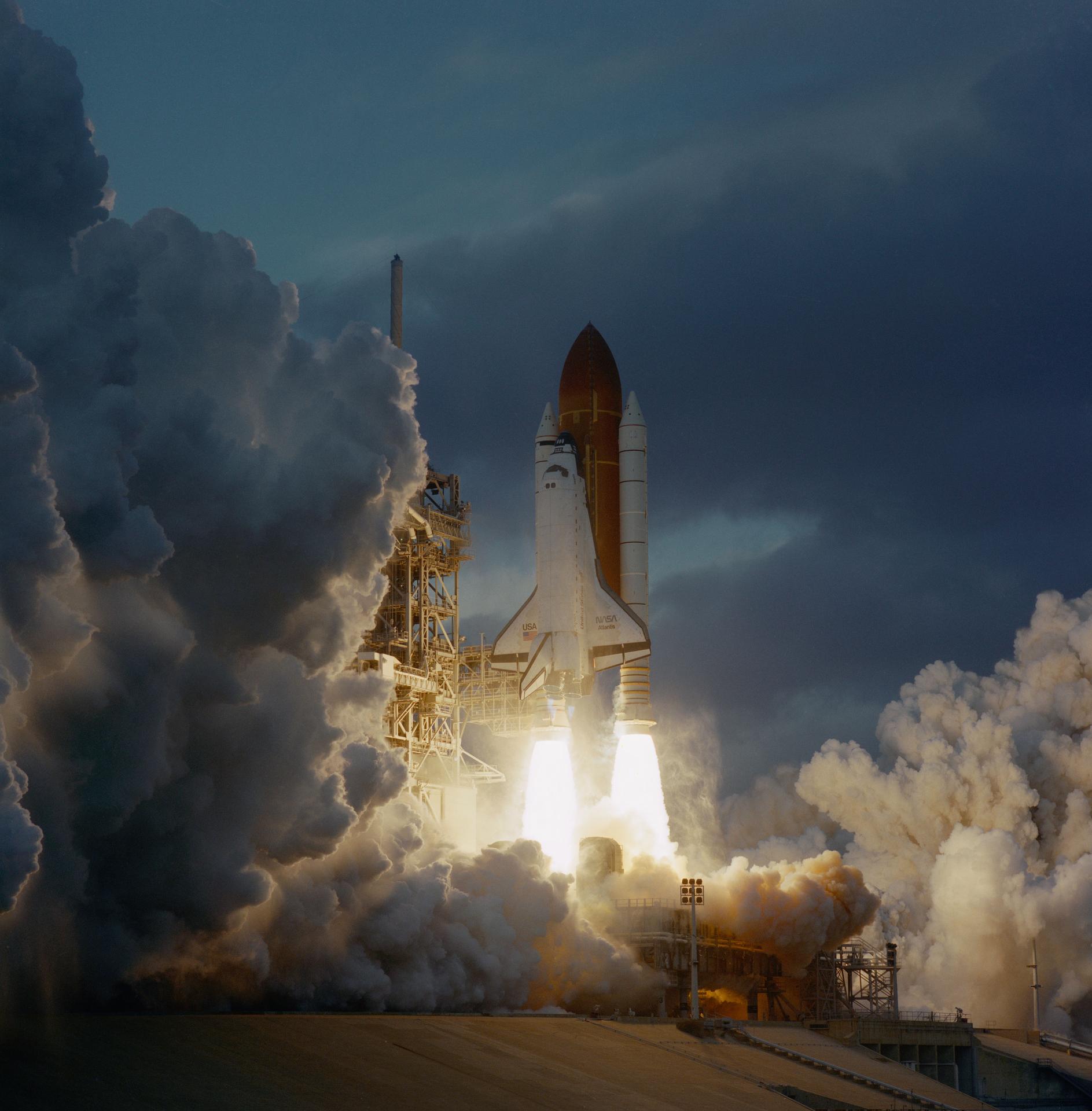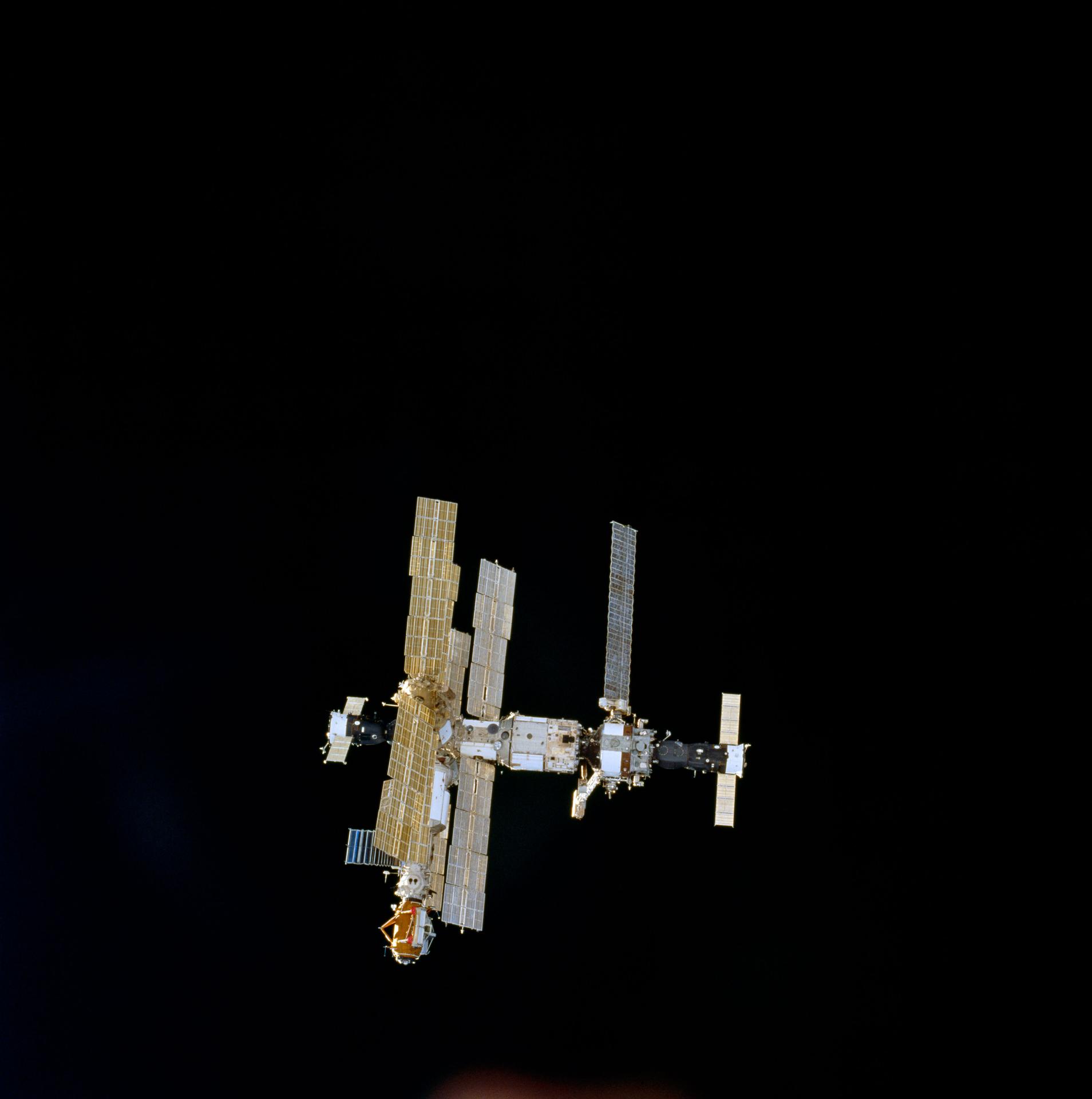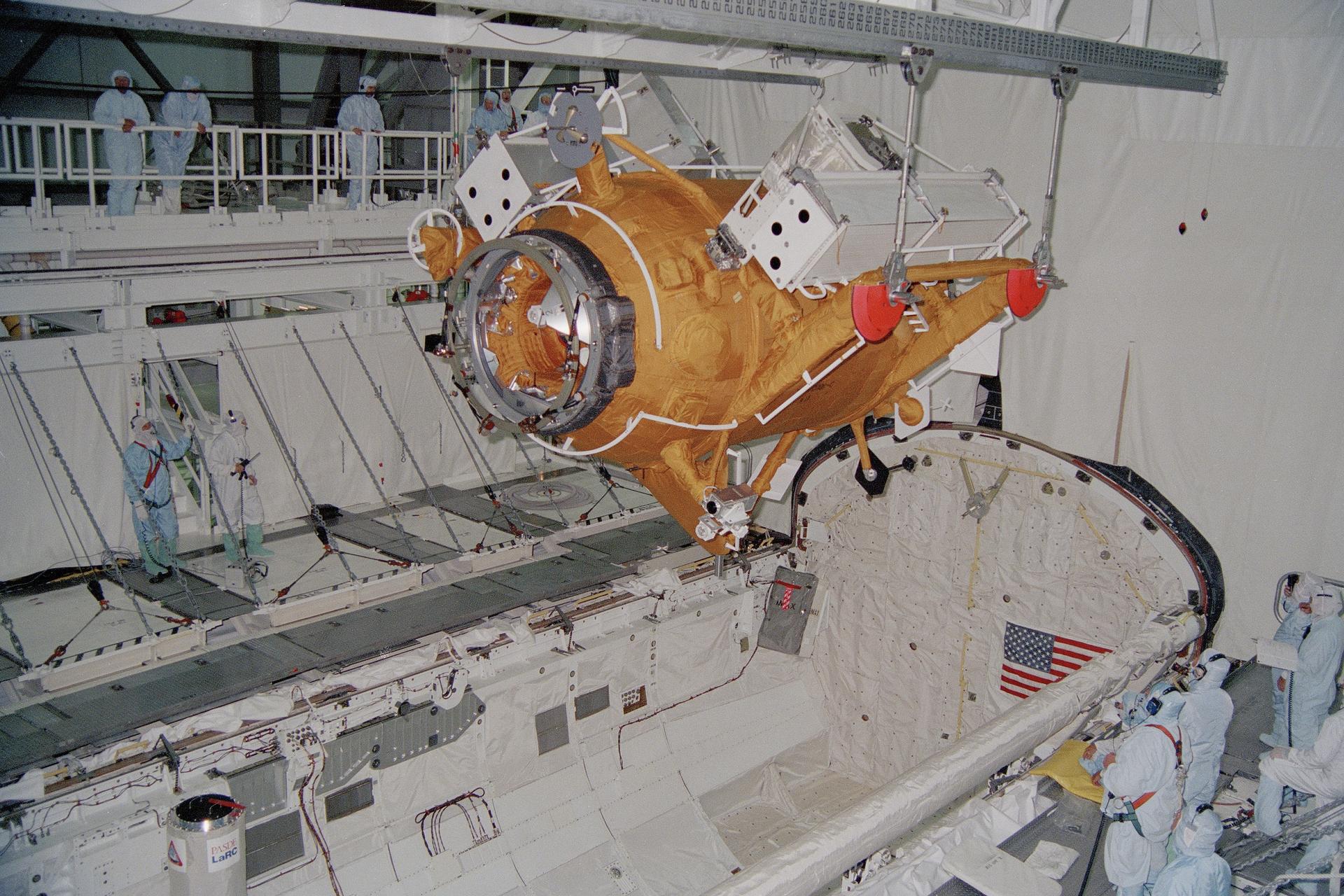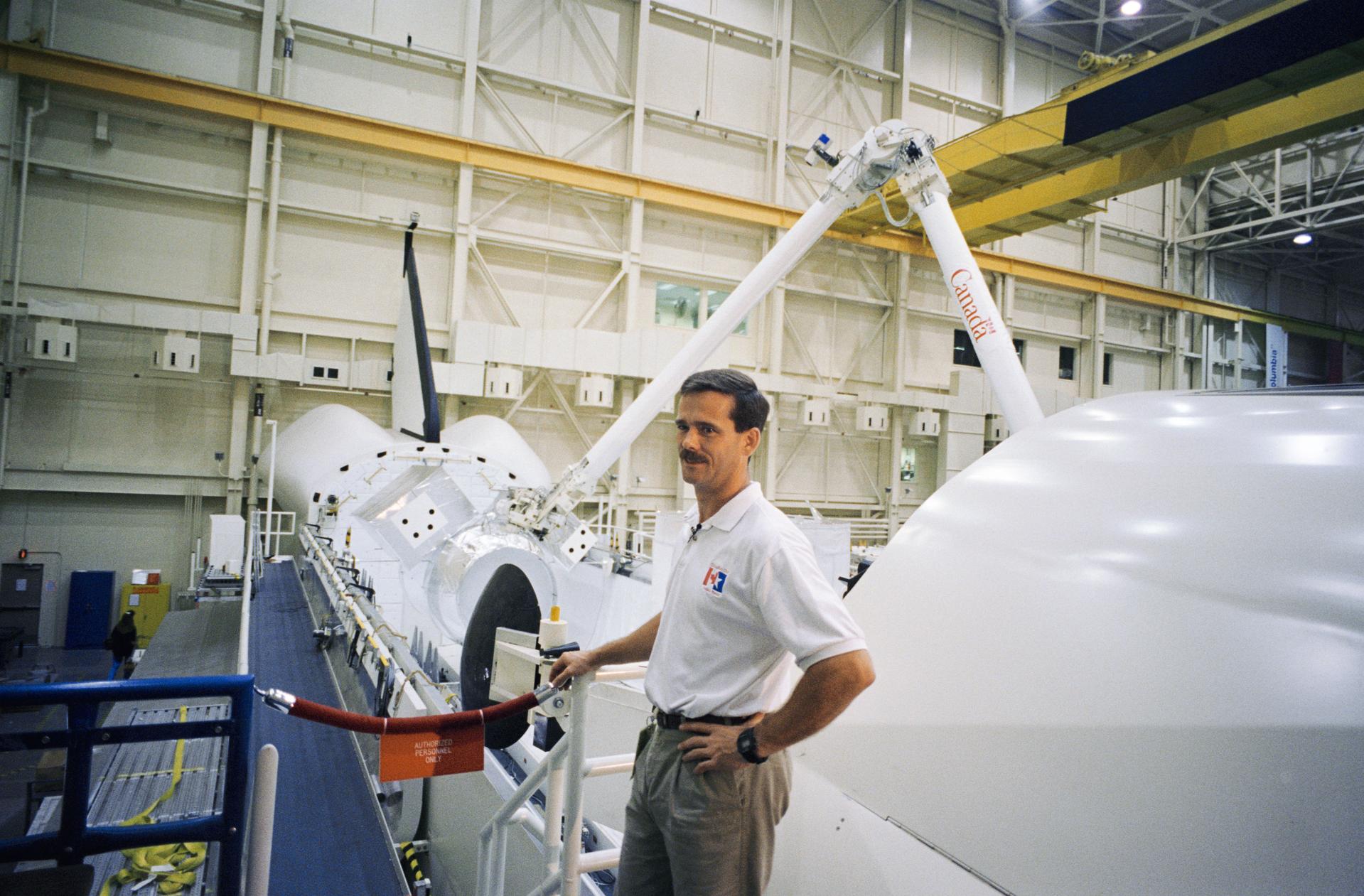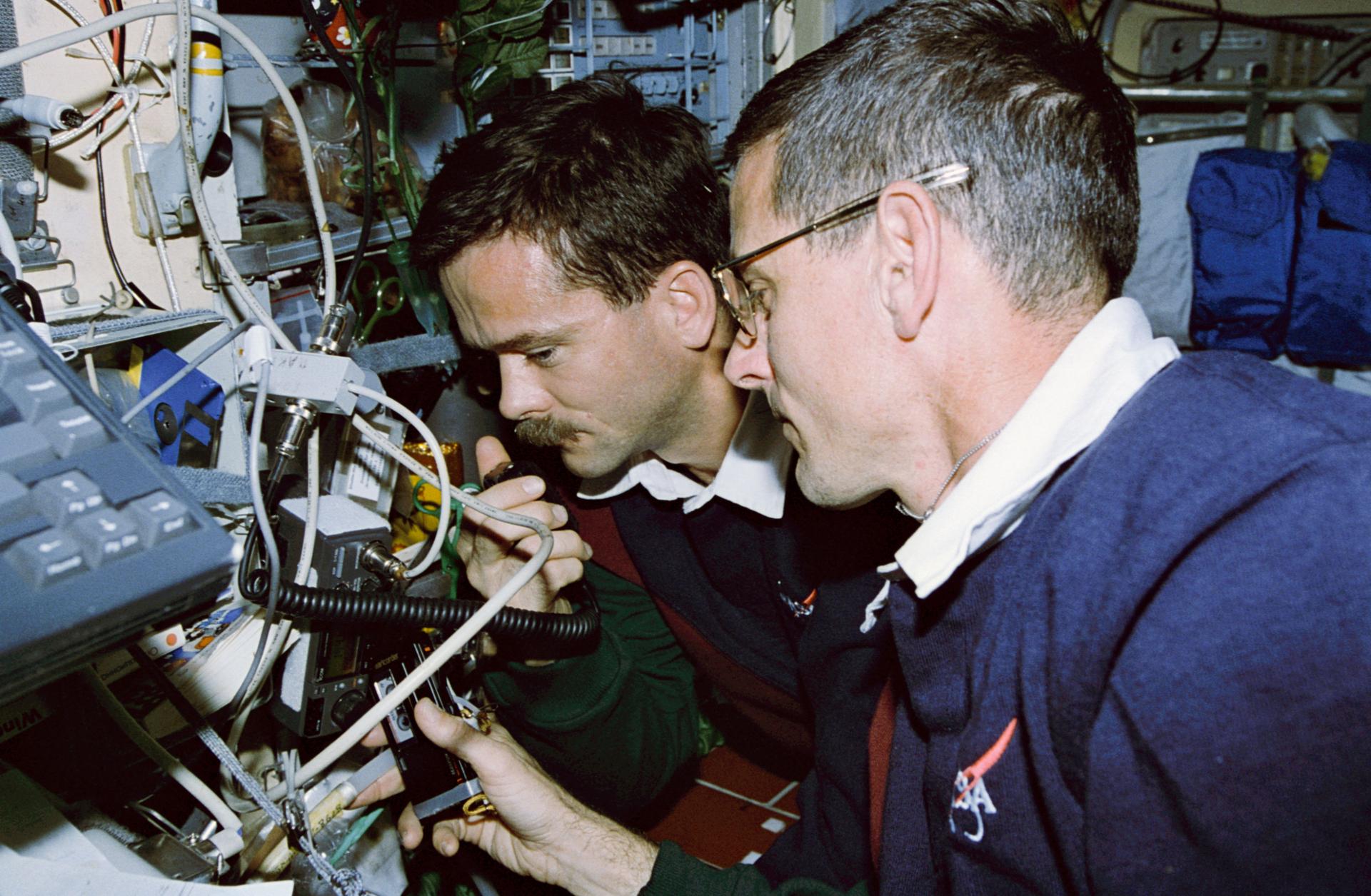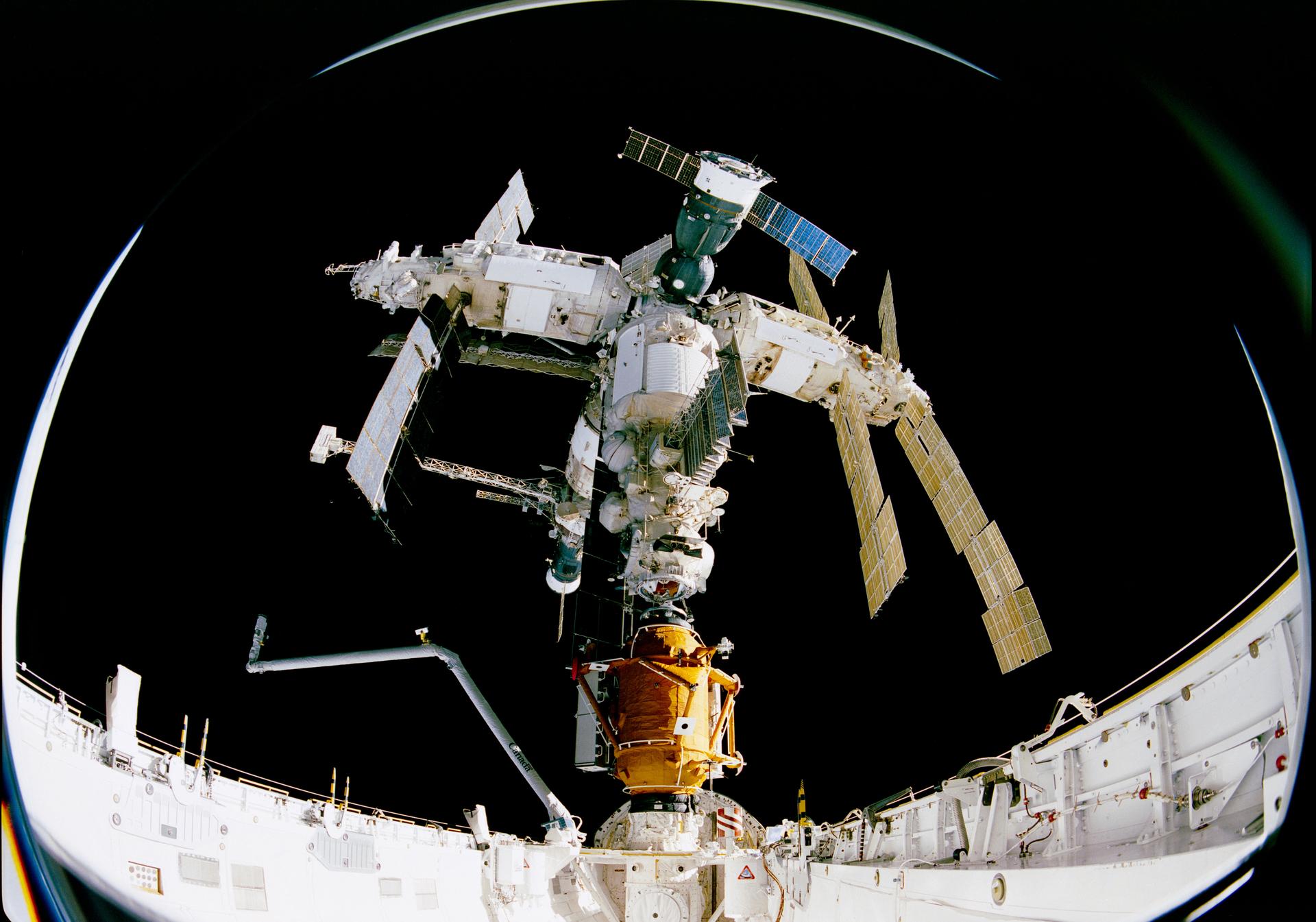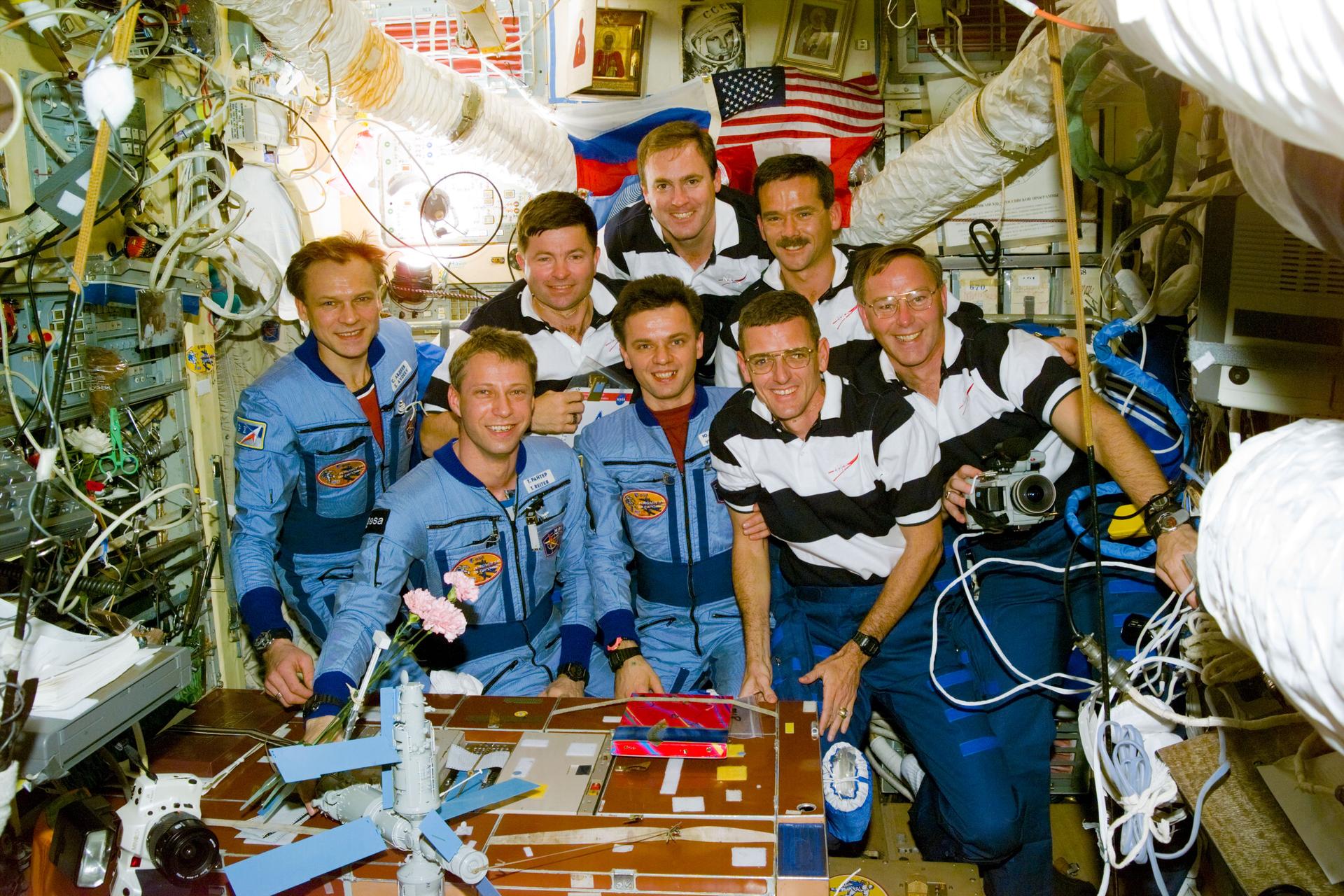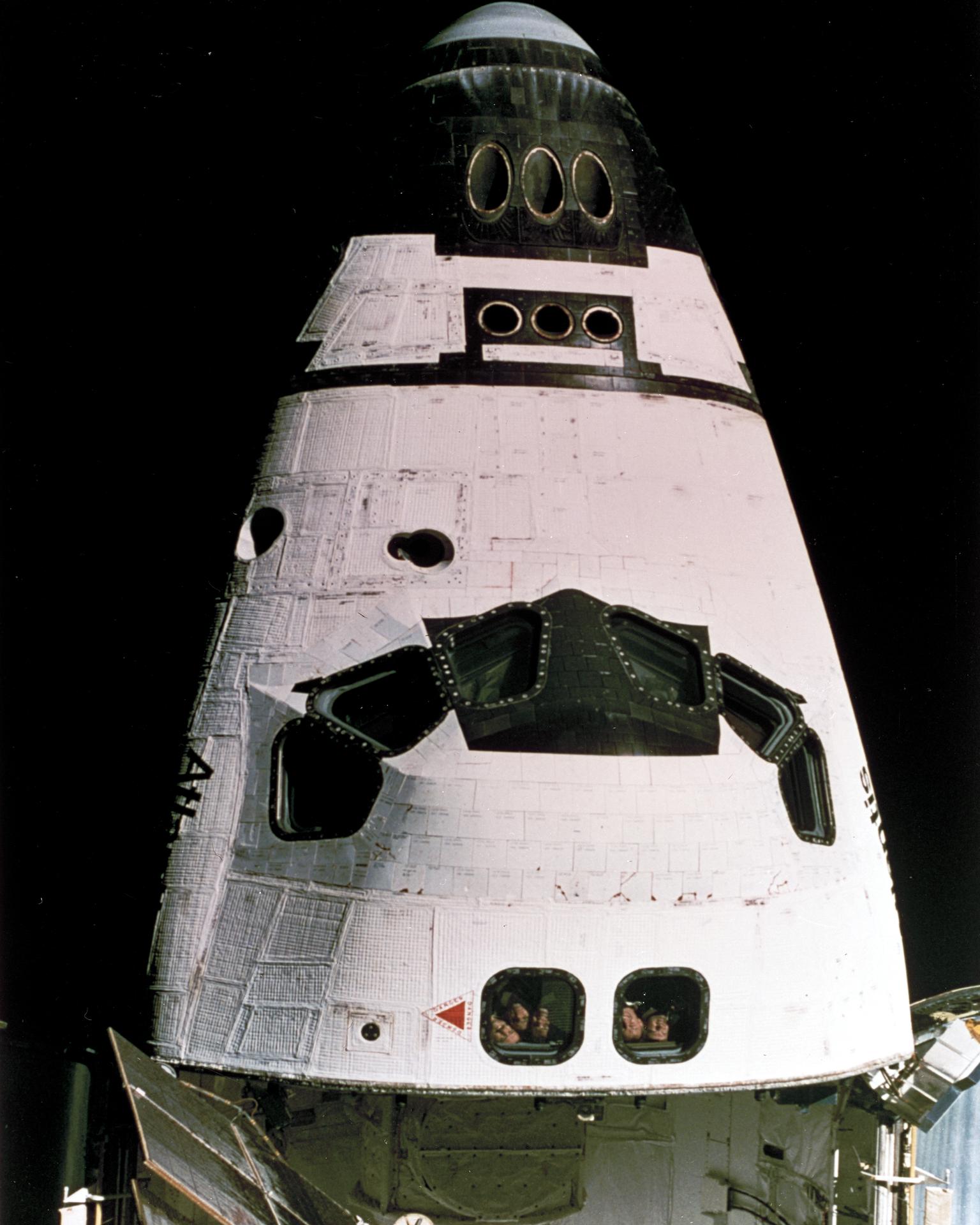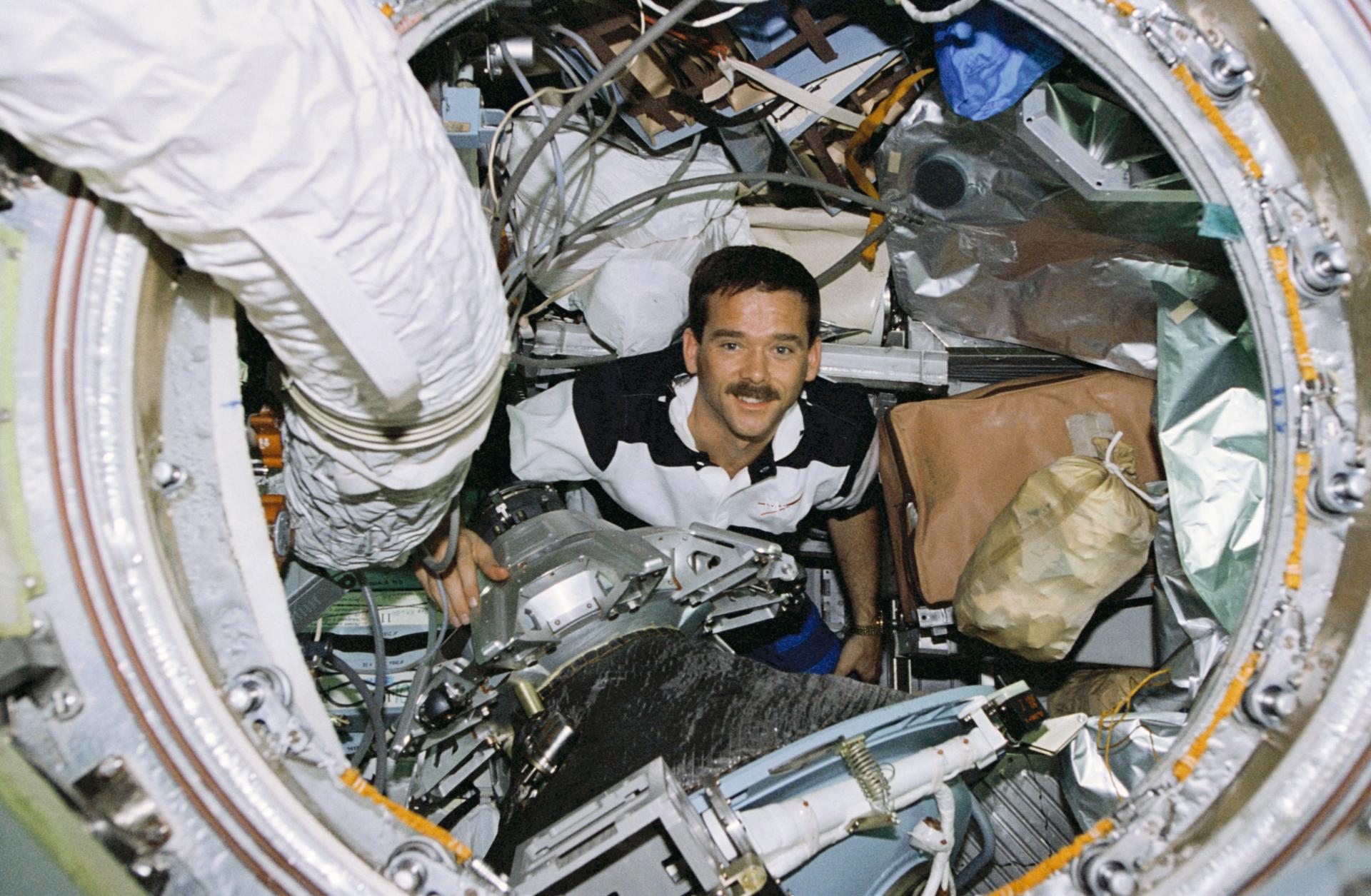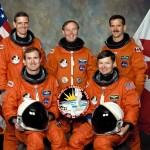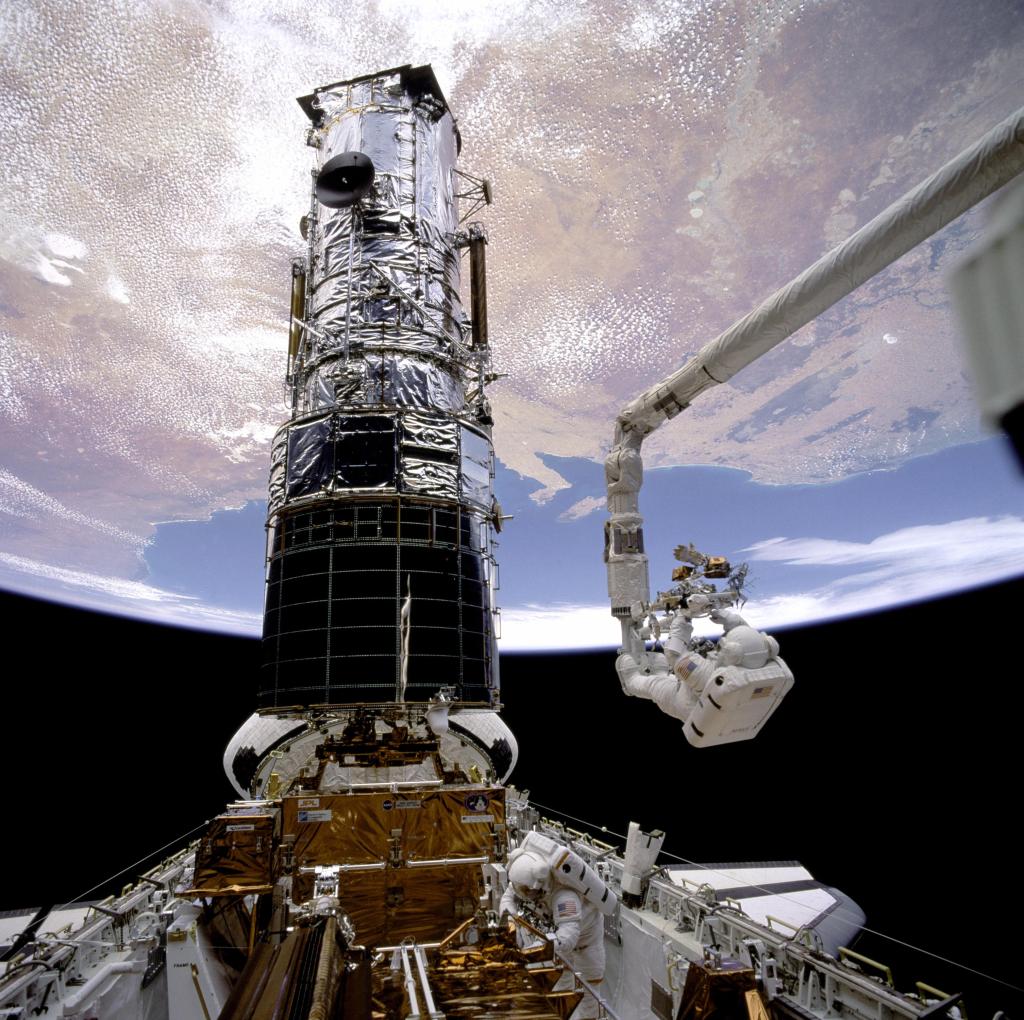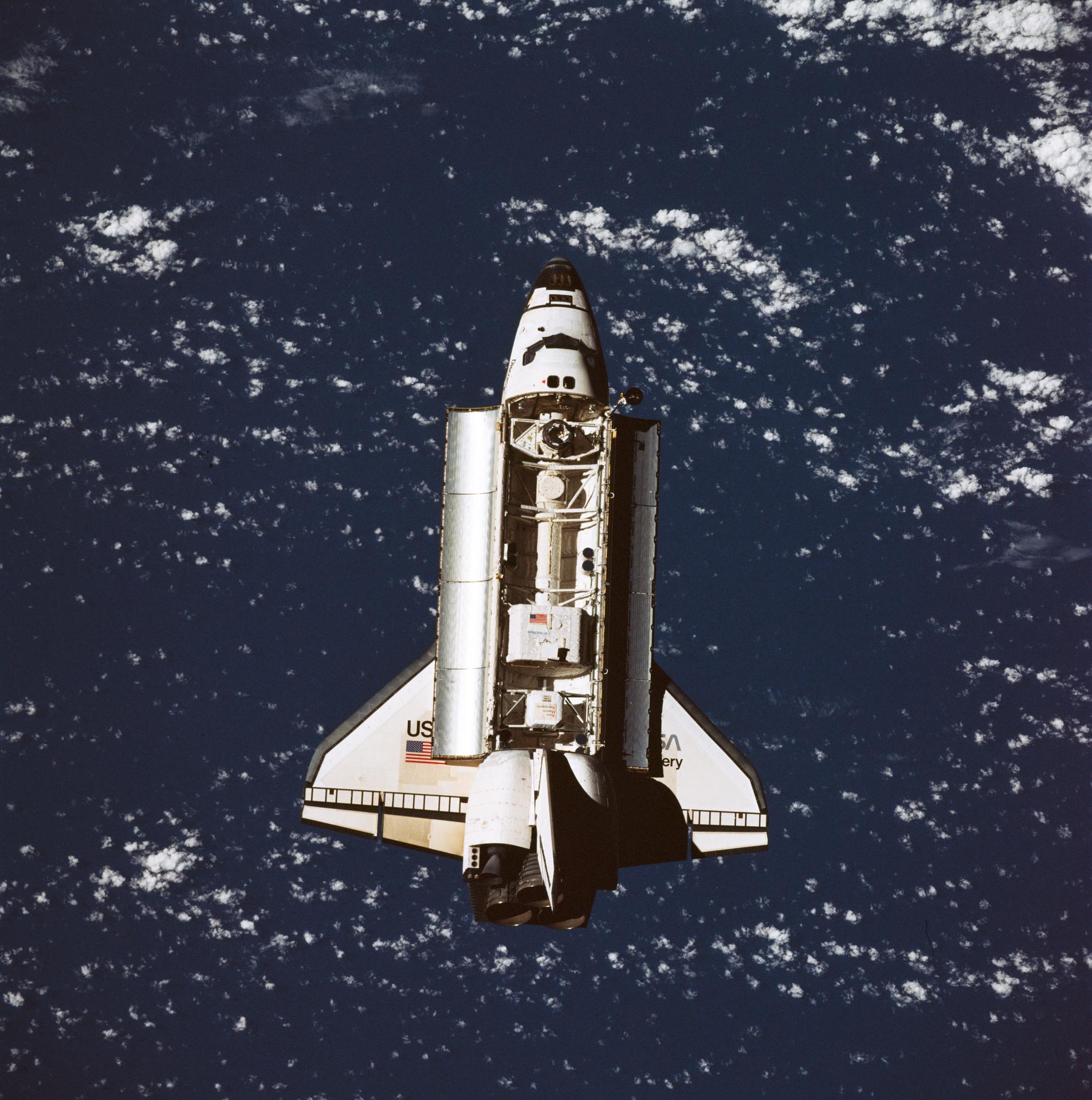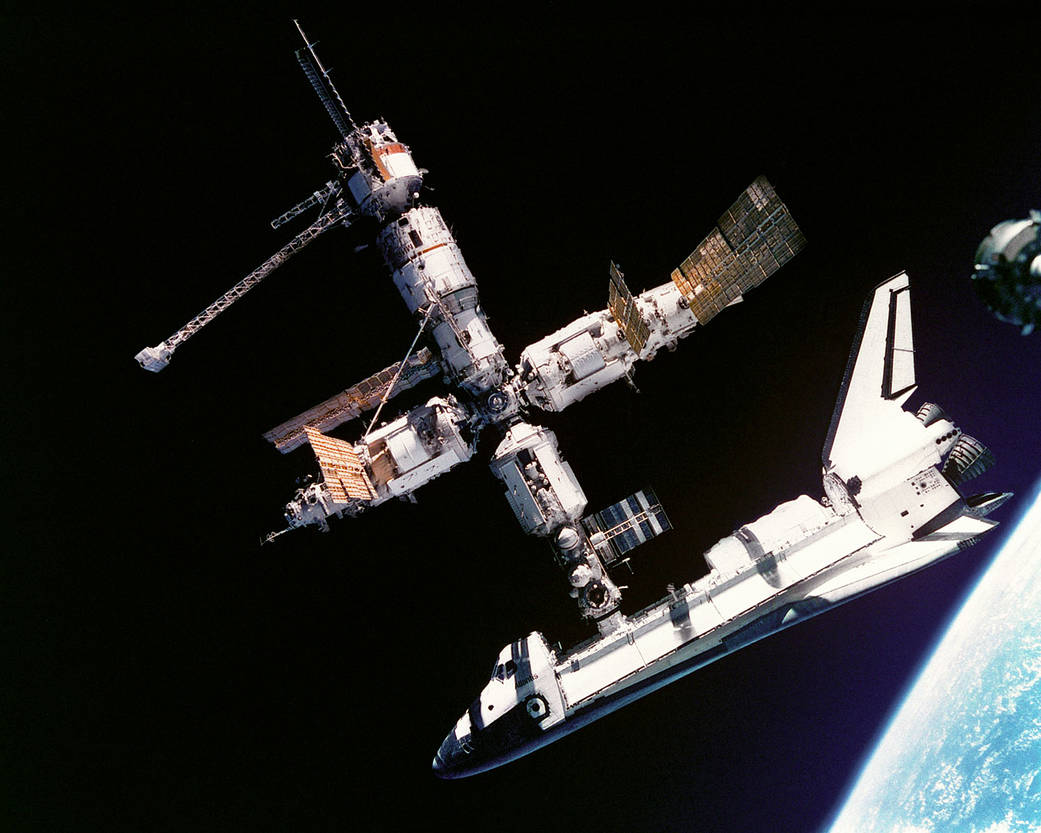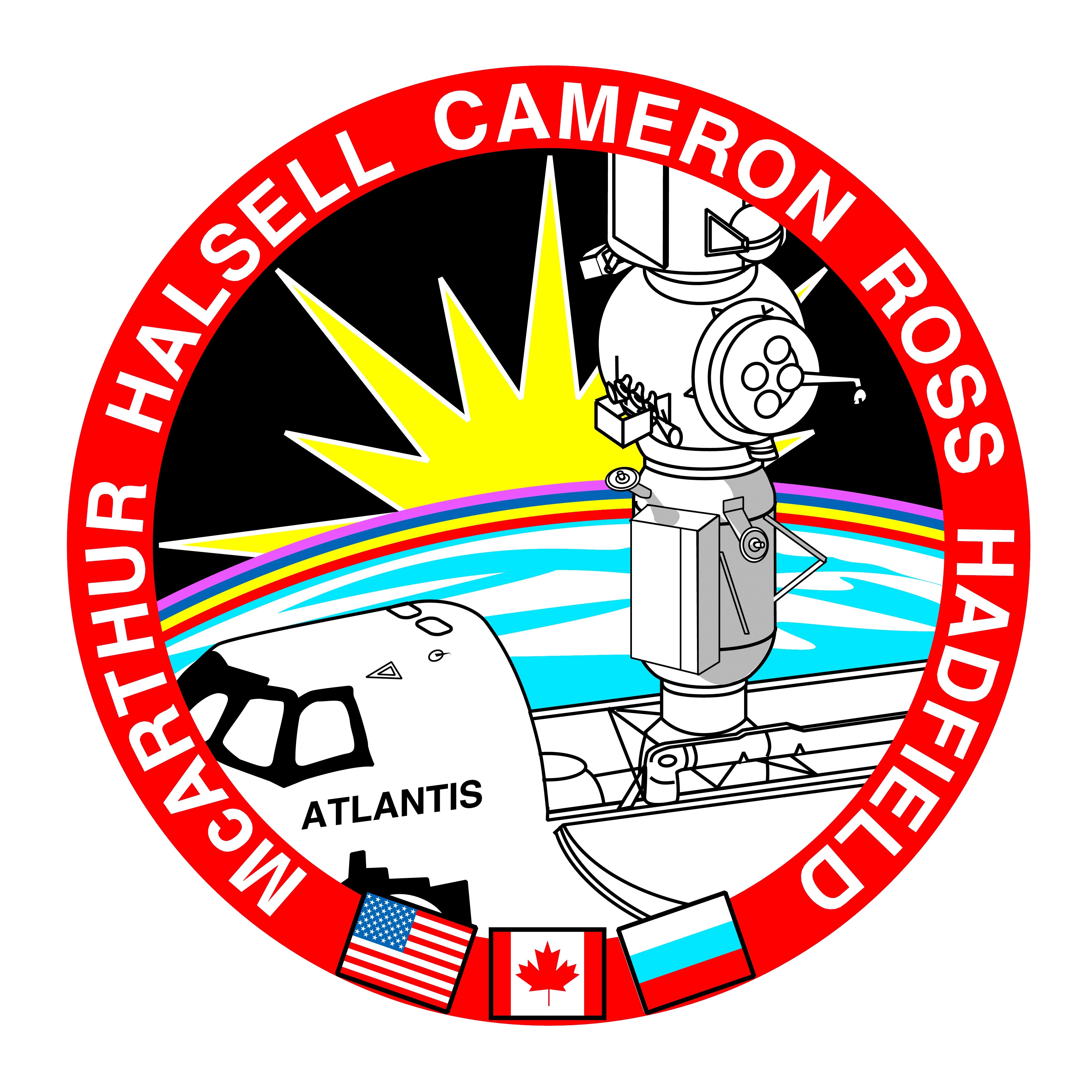
STS-74
STS-74 marked the second docking of the U.S. space shuttle to Russian Space Station Mir and illustrated the international flavor of the space station effort.
Orbiter
Mission Duration
Launch
Landing
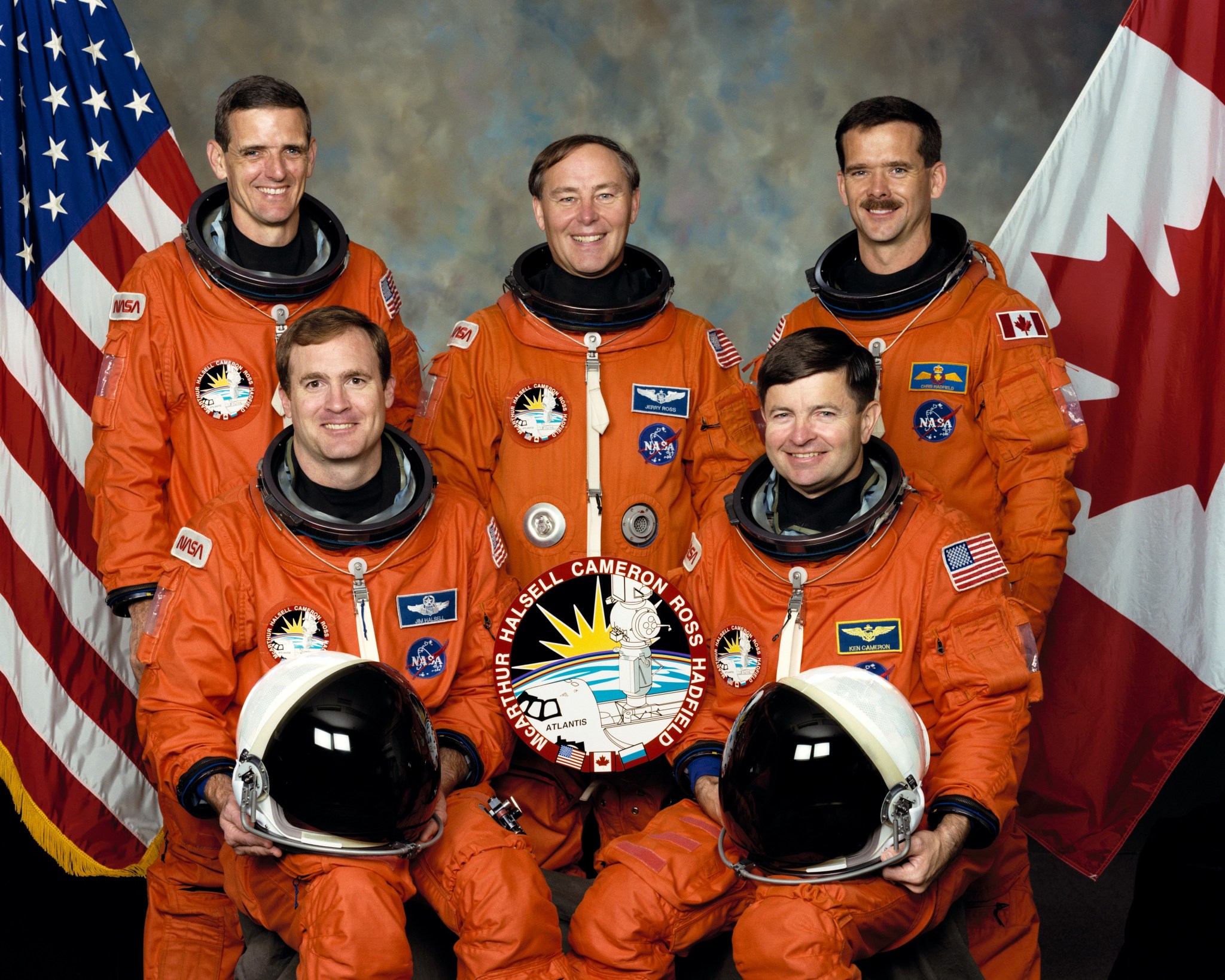
Mission Facts
Mission: Second Shuttle-Mir Docking
Space Shuttle: Atlantis
Launch Pad: 39A
Launched: November 12, 1995 at 7:30:43.071 a.m. EST
Landing Site: Kennedy Space Center, Florida
Landing: November 20, 1995 at 12:01:27 p.m. EST
Runway: 33
Rollout Distance: 8,607 feet
Rollout Time: 57 seconds
Revolution: 129
Mission Duration: 8 days, 4 hours, 30 minutes, 44 seconds
Orbit Altitude: 213 nautical miles
Orbit Inclination: 51.6 degrees
Miles Traveled: 3.4 million
Crew
Kenneth Cameron, Commander
James D. Halsell Jr., Pilot
William McArthur Jr., Mission Specialist
Jerry L. Ross, Mission Specialist
Chris A. Hadfield, Mission Specialist
Launch Highlights
Planned rendezvous with Mir necessitated brief launch window of about seven minutes. Liftoff originally set for Nov. 11 was scrubbed due to unacceptable weather at the Transoceanic Abort Landing (TAL) sites. Countdown following day proceeded smoothly to on-time liftoff.
Mission Highlights
STS-74 marked second docking of U.S. Space Shuttle to Russian Space Station Mir, continuing Phase I activities leading to construction of International Space Station later this decade. Mission illustrated international flavor of space station effort: shuttle crew included Hadfield, fourth Canadian to fly on shuttle but first Canadian mission specialist. Hardware in payload bay included Canadian-built Remote Manipulator System (RMS) arm, U.S.-built Orbiter Docking System (ODS), Russian-built docking module and solar array and U.S.-Russian-built solar array. Awaiting Atlantis aboard Mir were two Russian cosmonauts and a German cosmonaut, along with Russian and European Space Agency research samples and equipment.
Unlike first docking flight during which crew exchange took place, second docking focused on delivery of equipment to Mir. Primary payload of mission was Russian-built Docking Module (DM), designed to become permanent extension on Mir to afford better clearances for Shuttle-Mir linkups. Two solar arrays were stowed on DM for later transfer to Mir by spacewalking cosmonauts.
On flight day three, Hadfield operated RMS robot arm to lift DM from stowed position in aft section of payload bay, rotated it to vertical, and moved it to within five inches above ODS in forward part of bay. ODS is being flown on all Shuttle-Mir docking flights and serves as passageway between two spacecraft. Cameron then fired downward steering jets to push Atlantis against DM. Once mating confirmed, robot arm ungrappled from DM, hatches between DM and ODS opened, and centerline camera mounted inside top hatch of DM.
On flight day four, Atlantis caught up with Mir. Terminal Phase Initiation (TI) burn started with Atlantis eight nautical miles (9.2 statute miles/14.8 kilometers) behind Mir to begin final phase of rendezvous. Air-to-air communications between Atlantis and Mir 20 crew began around this time also. Approach to Mir same as for STS-71, along the R-bar, with Atlantis closing in on station from directly below. Handheld lasers used by shuttle crew during final approach to supplement distance and closing rates made by orbiter navigational equipment.
Manual phase of rendezvous began when Atlantis was about half-mile (804.7 meters) from Mir, with Cameron taking control of orbiter using aft flight deck controls. At 170 feet (51.8 meters) from Mir, Cameron halted approach while Mir was maneuvered into alignment for docking. After go from flight directors in Moscow and Houston, Cameron moved Atlantis to 30 feet (9.1 meters) from Mir, and then halted momentarily again to make final adjustments. Key camera for final approach was elbow camera on RMS arm.
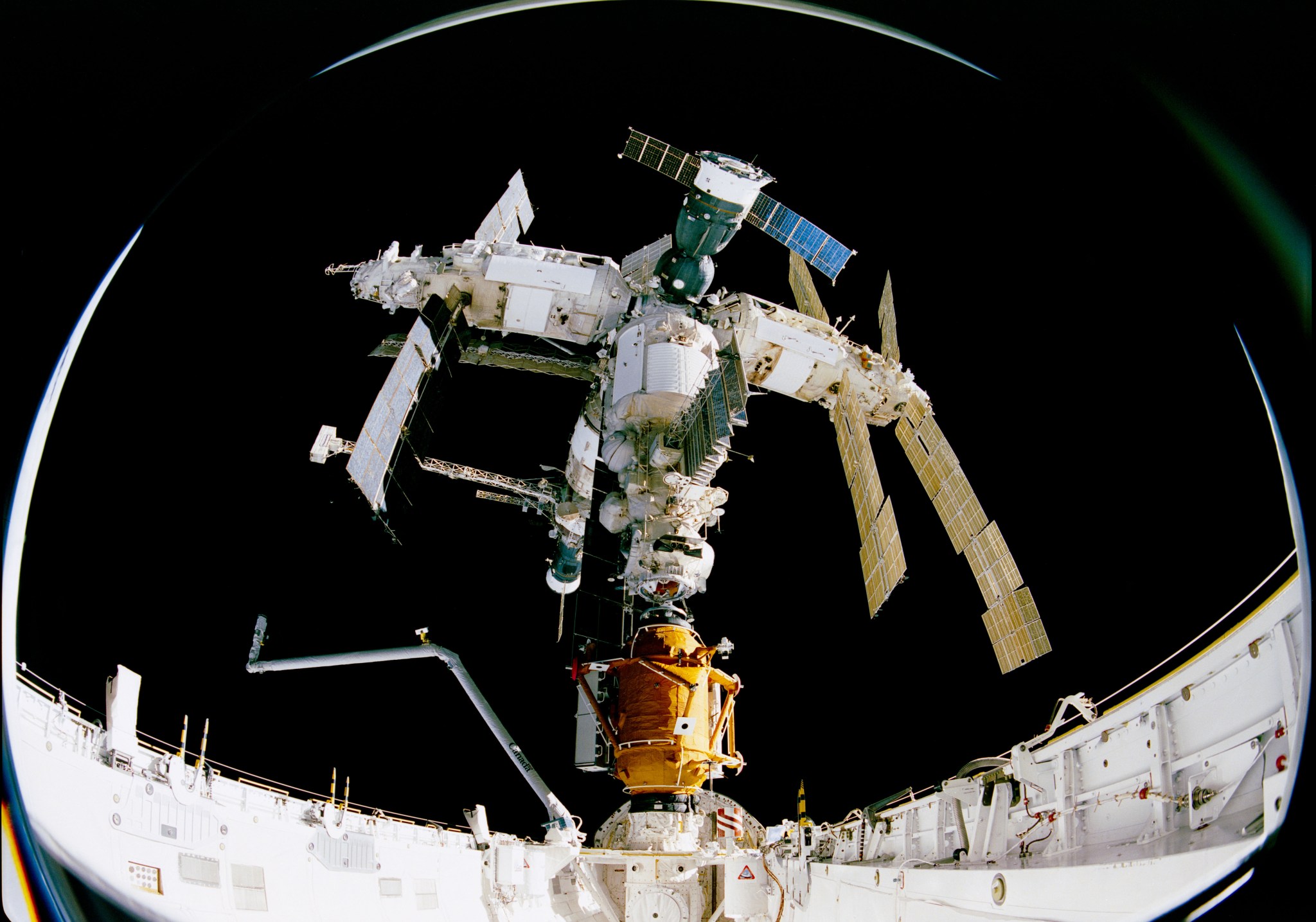
Hatches between Mir and Atlantis were opened at 4:02 a.m. EST, Nov. 15. Control of DM transferred to Mir 20 crew. During mated operations, nearly 1,000 pounds (453.6 kilograms) of water transferred to Mir. Numerous experiment samples, including blood, urine and saliva, were moved to orbiter for return to Earth. Shuttle crew also brought up gifts, including Canadian maple sugar candies and a guitar (second guitar on Mir). Lithium hydroxide canisters — a late addition — were transferred to Mir in case faulty environmental control system failed again and station’s air needed to be “scrubbed.”
Two spacecraft separated at 4:15 a.m. EST, Nov. 18, after which flyaround of station was initiated when Atlantis was 400 feet (121.9 meters) away.
No significant problems occurred with orbiter or any of cargo bay equipment.
STS-74
Shuttle News
Retired Space Shuttle Locations
Shuttle Atlantis – Kennedy Space Center Visitor Complex Shuttle Discovery – Steven F. Udvar-Hazy Center Shuttle Endeavour – California Science…
Read the Story

























